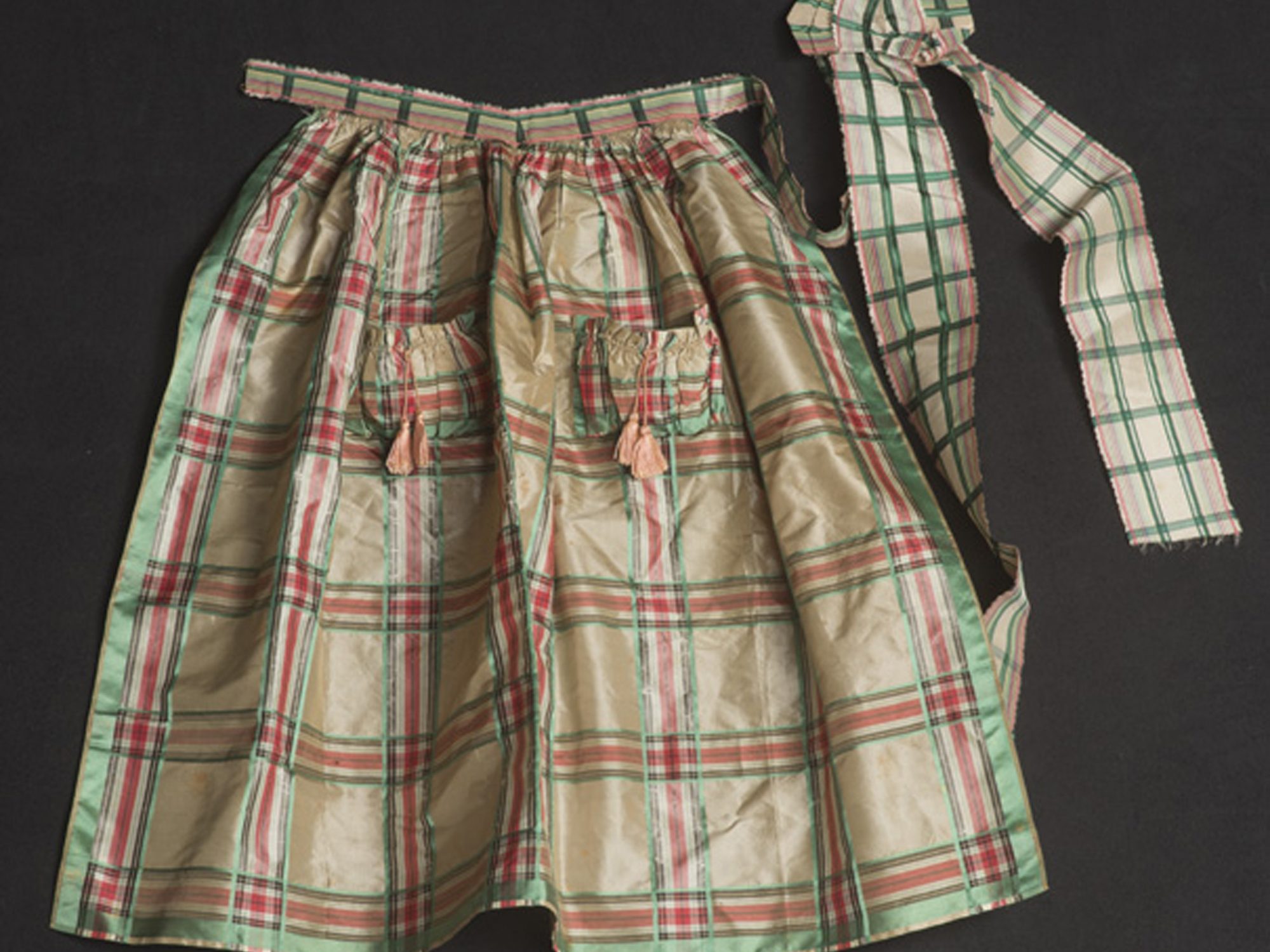This silk apron is short with red, green, black, and white stripes. It also has small pockets which are attached to the front and pink tassels to close them. Though it does have pockets (a symbol of practicality), this apron would not have been so practical for general housework. It’s vibrant color scheme and fine material would have been easily ruined if touched by food, unclean hands, dust, and every other element of domestic housework.
Since aprons of this caliber were popular and were not going to become filthy through menial labor, tailors, department stores, and custom shops began to delve into this bourgeois market by making aprons like this plaid one. A woman in the 1840s could have walked into any clothing shop appropriate for her class status and found an apron like this one, or ordered one to fit her exact style and size.
In order to satisfy the diverse tastes of women, there are numerous examples of silk aprons. Though they are similar in their fabric and colors, their patterning, size, and embellishments speak to the individual wearer’s style and help to understand what fashion looked like in the early nineteenth century.
Perrot, Philippe. Fashioning the Bourgeoisie: A History of Clothing in the Nineteenth Century. Princeton: Princeton University Press, 1994, 52-54.
Plaid Silk, Historic Clothing Collection, Smith College, Northampton, MA. 1979.7.45.
